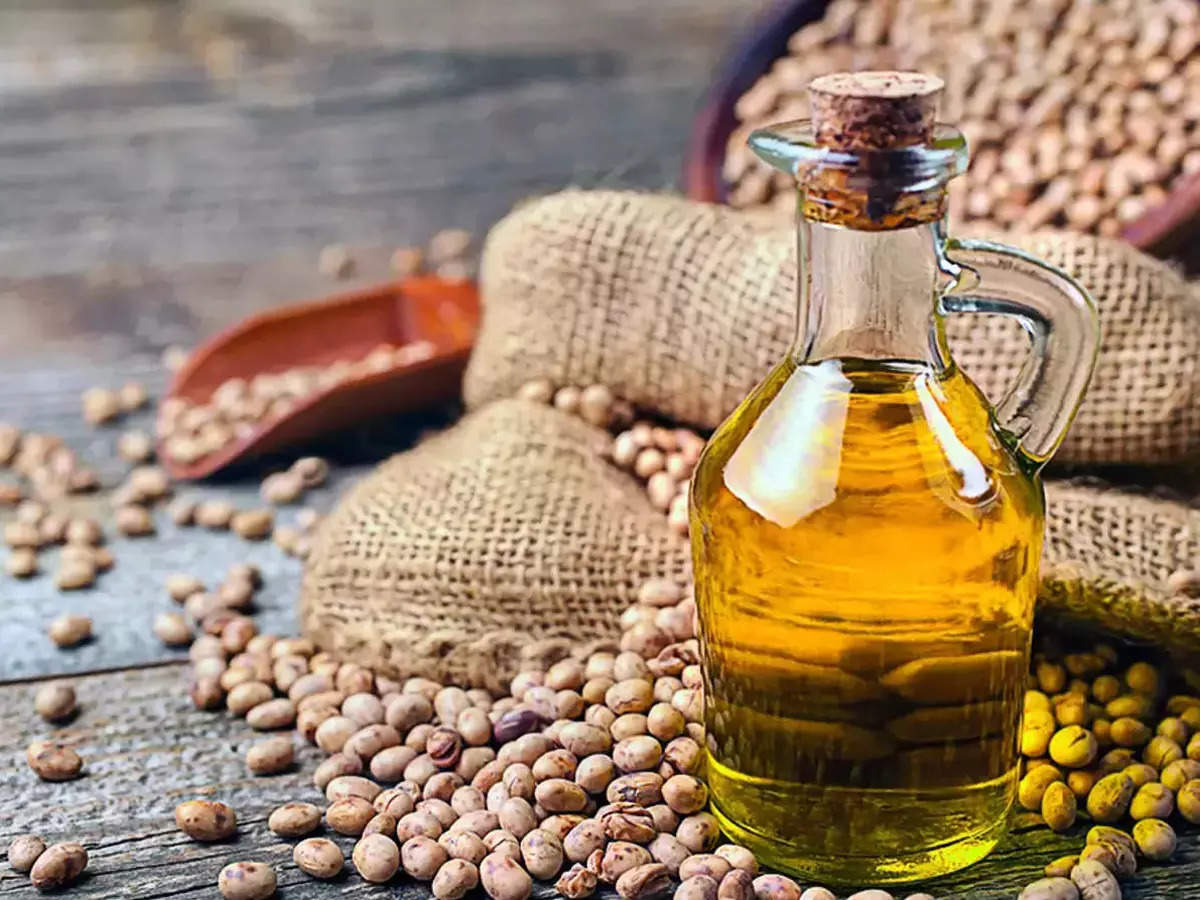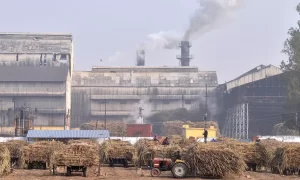Soyabean farmers in Maha face financial crisis

Soyabean farmers in Maharashtra are facing a financial crisis due to plummeting prices and government policies. With 70-75% of the crop stored in warehouses, farmers are struggling to repay loans against their stock. The reduction in import duty by the union government has led to a decrease in prices, hitting both farmers and processing units. Maharashtra is now urging the government for policy intervention to support soyabean prices and ensure farmers receive MSP.
MUMBAI: Soyabean farmers in Maharashtra, the second largest producer of the crop, are in a peculiar trap. Brought about by the storable nature of soyabeans and a deleterious union government policy, soyabean farmers as well as soyabean-processing units are facing a huge financial crunch.
The crux of the matter lies in the fact that soyabeans, unlike most crops, can be stored, even at home, for two years, and that banks give 70 percent of the market price as a loan to farmers on warehouse receipts. With the price of the crop plummeting below even the minimum support price (MSP) of ₹4,600 per quintal this year, farmers chose to keep the crop in warehouses for over three months and borrow money against the stock. It is estimated that 70 to 75 percent of the crop is lying in warehouses.
But the situation is now rapidly turning grim. Farmers are getting notices to repay their loans on the one hand while on the other, the soyabean processing industry, in the absence of raw material, is also facing financial problems. To resolve the growing unrest in the socio-politically influential farmer community, the agriculture department is trying for an immediate policy intervention by the union government.
Uddhavrao Dahifale, a soyabean farmer from Renapur in Latur district who cultivates soyabeans on 35 acres, explained the situation. “During the harvesting in October, the prices were around ₹5,300 per quintal,” he said. “So farmers hoped the prices would go up to over ₹6,000 per quintal and planned to sell their stock at that point. But the price of soyabeans is now around ₹4,200 per quintal, which is ₹400 below the MSP of ₹4,600. We cannot sell a loss but banks and private warehouse landlords have issued notices to us to repay our loans, threatening otherwise to sell the crop at market price to recover the loan amount.”
Dahifale blamed the union government which, with one eye on the coming Lok Sabha elections, had reduced the import duty to control the price of edible oils. “Farmers are paying the price for this policy,” said Sattar Patel, vice-president of the Swabhimani Shetkari Sanghatana. “The deadline for the concessions on import duty structure on oil was up to March 2024. So there was hope that after March 2024, soyabean prices would go beyond ₹6,000 per quintal. But in January 2024, the union government extended the import duty concessions for the next one year till March 2025. Thus the prices fell by around ₹1,000 per quintal and below the MSP.”
Soyabean processing units across the state are also suffering on account of not getting raw material. “We have received only 25 to 30 percent of the crop,” said Hemant Vaidya, who runs Kisan Mitra Warehouses Pvt Ltd. “We produce oil and cattle feed from the crop. If this continues, processing units will work at below 50 percent capacity, and it will affect our buying capacity as well in the absence of sufficient capital.”
Three years ago, soyabean prices touched a record ₹11,000 per quintal when the import duty on crude palm oil was around 30.25 percent. In October 2021, the duty was reduced to 8.25 percent and in February 2022 it was reduced to 5.50 percent, which reduced the dependence on soyabeans, leading to a fall in prices. Besides, in June 2023, the union government reduced the import duty on refined soyabean oil from 17.5 percent to 12.5 percent. As a result, the price of soyabeans was severely affected in the last three years in a phased manner.
Pasha Patel, chairperson of the Maharashtra State Agriculture Price Commission said that the state was going to request a policy intervention from the union government. “Marathwada and Vidarbha contribute to around 80 percent of the soyabean cultivation in the state,” he said. “All the associations related to soyabean processing in the country have demanded around 15 to 20 percent export subsidy on soyabean de-oiled cake (DOC) or soya meal, which is used to produce cattle feed due to its high protein value. We support their suggestion, as this would help to increase the price hike in soyabeans and farmers can get MSP. We have submitted a letter on this and asked for immediate intervention by the union government.”
Maharashtra agriculture minister Dhananjay Munde said that he had initiated a correspondence with the union agriculture ministry for a better price for soyabeans and may visit Delhi to discuss this.
Why do farmers prefer soyabeans?
· Soyabean has become a major kharif season crop in Maharashtra, with around 30 percent of kharif land under soyabean cultivation. In the last two decades, it has gradually replaced kharif crops like sunflower, green gram (moong), split black gram (urad) and kharif sorghum (jwari).
· Farmers prefer soyabean as it is a cash crop and can be stored for over two years even at home. So farmers have no pressure to sell the crop immediately and can wait for the price they want. Besides, banks and private lenders give loans against the stored soyabean in warehouses on submission of a receipt from the warehouse. Thus, even without selling the crop, farmers can get money for their next crop or home expenses.















